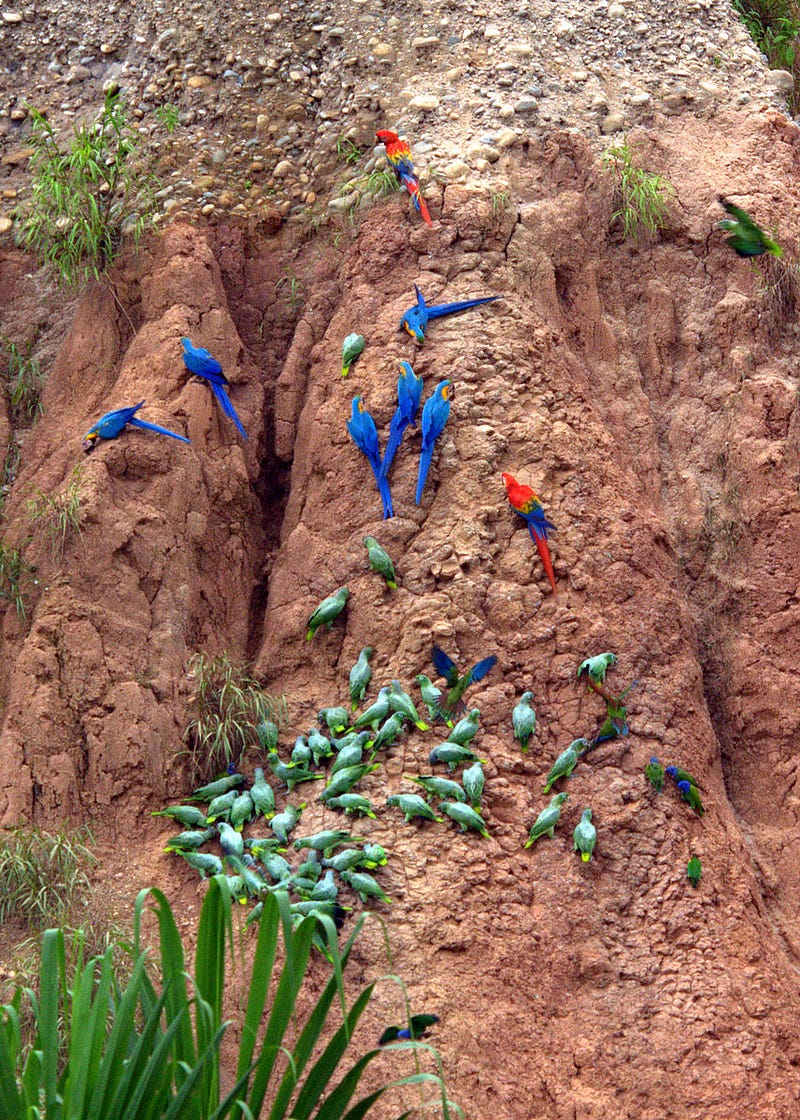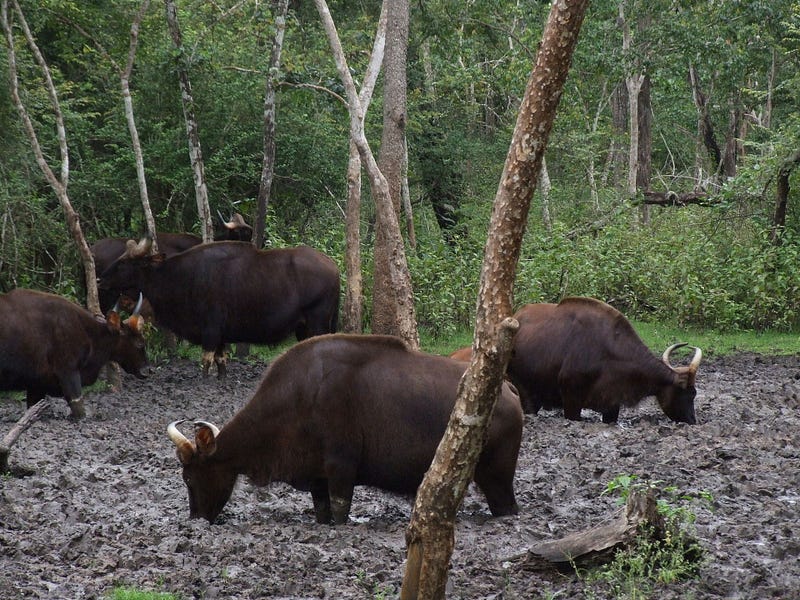
An Interesting Dietary Choice
These are scarlet macaws, Ara macao. They belong to the subfamily Arinae, also known as the neotropical parrots. These gorgeous birds use their large, sturdy beaks to crush nuts and seeds. They also eat a wide variety of ripe and unripe fruit. However, we’re not going to be talking today about the parrots’ typical diet. Instead, we’re using them as a window into a somewhat odd behavior.
Take a look at the photograph below and try to figure out what those parrots are doing (try to not look at the caption if you can help it). I’ll give you a hint, they’re not just perching there for rest or for socialization.

That’s right, these parrots are eating dirt, specifically clay. This is a behavior known as geophagy, geo coming from the ancient Greek word for earth. Why would these parrots eat earth? It doesn’t contain any proteins, carbohydrates, or fats (the main types of nutrients extracted from food). Birds aren’t the only animals that feed on clay deposits. It’s most frequently seen in large herbivorous mammals like elephants, or the gaur (Indian bison), Bos gaurus, pictured below.

Obviously, there must be some reason why animals do this. Even humans have been known to consume earth, though some such behavior can be attributed to disorders such as hookworm disease, which can induce a desire to consume soil. There is also a mental disorder, called pica, characterized by the consumption of non-nutritious substances including paper, hair, glass, wood, clay, and many other things not considered food. But other animals do this regularly, so it can’t possibly be just a disorder.
There’s a hint in the specific term I used above to describe what the parrots were eating: clay. Geophagy does not occur in just any sort of soil. Most animals that engage in this foraging behavior have very specific preferences. Natural clay differs from other types of soil because of its high mineral content. Animals tend to consume it in order to acquire these minerals, which are not usually plentiful in their normal diet. Different clay deposits can be high in different mineral types. These include sodium, calcium, potassium, and magnesium among others.
High mineral concentration is not the only useful aspect of eating soil. The diet of neotropical parrots includes a variety of seeds, nuts, and fruits. Over millions of years, plants have developed different defense systems against predators. Some of these are physical, such as thorns or multiple layers of armor around fruits. However, many of these defenses are chemical in nature. Many of these chemical defenses have well known names, because humans have used them for medicinal or recreational purposes. For example, one type of chemical defense is the alkaloids, which include caffeine, nicotine, morphine, and strychnine. In small doses, such compounds often have a bitter taste. Higher doses can be detrimental or even lethal.
What good is eating dirt against such defenses? The toxic compounds often form positively-charged ions in the digestive system. The minerals present in certain clay layers contain negatively-charged binding sites. The positive ions from the toxic compound bind to these sites and are neutralized. Animals whose diets contain large amounts of toxic material will consume clay with the highest possible binding site capacity.
However, the most common reason for geophagy is still mineral deficiency. With parrots in South America, initial research shows a positive correlation between the behavior and distance to the ocean. Combined with a mineral analysis of the chosen soils, it appears that consuming clay is done primarily by parrots to acquire sodium in their diet. Those that live closer to the ocean will not have as pronounced a deficiency of that mineral and will need to eat earth less frequently than their inland counterparts. Animals have gotten so adept at acquired the perfect mineral combinations for them, that certain locations will have them eating dirt in only a single clay layer and completely ignoring the clay a few feet above or below.
As Season 5 continues to progress, keep in mind that some of the diets and strategies presented may seem bizarre, or even counter-intuitive, but there is always a reason for them. That behavior exists because those individuals that possessed it had an increased survival chance over those that did not. Thus, if said behavior is heritable (able to be passed down genetically), the entire population of that species will move toward having it until and unless the environmental conditions change. That means that geophagous species may change that behavior if their diet changes to include fewer toxic compounds or an increased supply of certain minerals. None of these behaviors are fixed, but they have instead developed to best take advantage of each given environmental niche.
I hope you are enjoying Season 5 so far. If you appreciate the work and effort that goes into these stories and you like learning new things about nature, please continue to tune in. Consider sharing Nature Stories with your like-minded friends and family. I love to share my own fascination with the natural world, so please spread these around to anyone you think might find enjoyment in reading them.